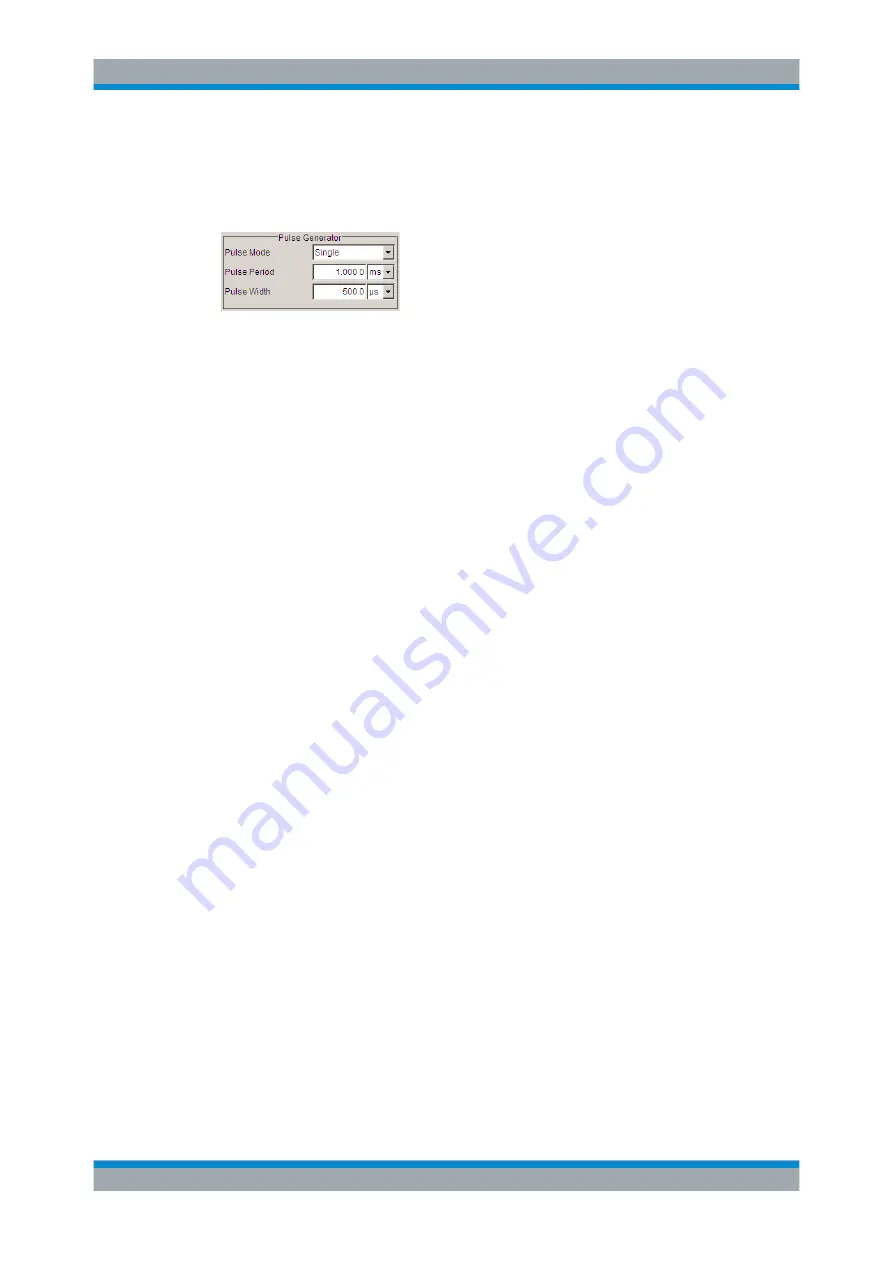
Manual Operation
R&S
®
SMB100A
72
Operating Manual 1407.0806.32 ─ 21
Several fields of associated but separately set parameters are organized in menu
areas. A menu area is framed and labelled with the function common to all parameters.
Example: Pulse Generator
Each of the setting fields is assigned a parameter name. The kind of setting varies
depending on the parameter to be set. Some settings can only be made in a specific
configuration. If setting is not permitted with the specific configuration selected, the
respective item is disabled and displayed in gray and the entry or selection field cannot
be accessed.
4.3 Accessing Dialogs
The MENU (CTRL+M) key opens the complete menu tree. Selecting a functional block
and pressing the ENTER key opens the menu associated with this block.
An alternatively way to access a dialog is to use the CLOSE (ESC), DIAGRAM (CTRL
+D) and REARR (CTRL+A) keys on the front panel.
For a quick access to the dialogs, use one of the following alternative methods.
Displaying the block diagram or a dialog in the foreground
► Press the DIAGRAM (CTRL+D) key to move the cursor to the block diagram.
All active menus are minimized.
Enlarging the indication of the header section
► Press the DIAGRAM key twice to enlarge the indication of the header section.
Tip:
Use the REARR key to toggle between the enlarged and normal sized dialogs.
Accessing the menu tree
► Press the MENU (CTRL+M) key to open the complete menu tree.
Calling the File or Setup dialog
► Use the FILE (CTRL+S) or SETUP (CTRL+E) keys to open the respective dialog.
Closing an active menu
► Press the CLOSE key to close an active menu.
Tip:
If the cursor is at the highest menu level, you can also use the ESC key to
close the active menu.
Accessing Dialogs






























